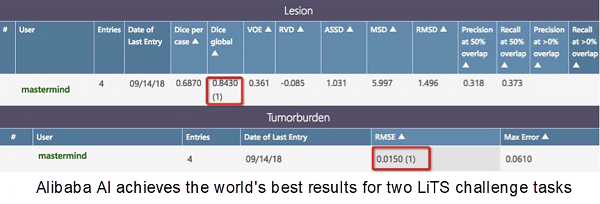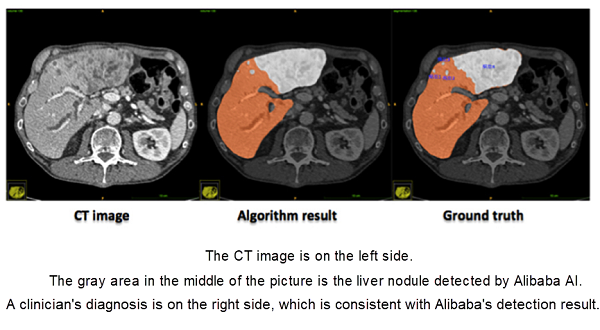After using artificial intelligence (AI) for flu trend prediction in Macau, Alibaba continues to explore how to use technology to protect human health. This time, the goal is to accurately detect liver nodules.
On December 28th, 2018, Alibaba stood out from nearly 100 teams of scientists and achieved the world's best results for two Liver Tumor Segmentation Challenge (LiTS Challenge) tasks. These two tasks were the lesion segmentation and tumor burden estimation respectively.

Liver disease is a major public health threat to humans. Archaeologists have even found the hepatitis B virus in the bones of ancient humans who lived 4,500 years ago. Currently, the mortality rate of liver cancer in China is second only to lung cancer among malignant tumors.
Liver nodules, although not fatal, can be a precursor to some malignant tumors. LiTS is jointly organized by universities (such as Technical University of Munich and Tel Aviv University), scientific research institutions, and the Medical Image Computing and Computer Assisted Intervention Society (MICCAI Society). The goal of the LiTS Challenge is to encourage researchers to develop automatic segmentation algorithms to segment liver lesions in contrast-enhanced abdominal CT scans.
Accurate measurement of liver nodules can help doctors make more accurate diagnosis and administer the appropriate treatment. However, the sizes and shapes of liver nodules in the same patient are diverse. The gray-scale distribution of the nodules can be strikingly different from each other, or be very similar to that of surrounding tissues—there are no clear boundaries.
Alibaba solves the problem with the heterogeneous shape of liver nodules through network structure analysis based on inter-layer and intra-layer information fusion in CT images. This involves the Atrous Spatial Pyramid Pooling (ASPP), Sub Pixel Convolution, and multi-feature fusion technologies.

These technologies were developed by the Alibaba Cloud Artificial Intelligence Center. The next step after liver nodule detection is to determine whether the liver nodules are malignant, which will help in clinical treatment.
This team has also broken the world record for lung nodule detection accuracy using AI technologies. They created a fully automated detection method: the machine automatically reads a patient's CT sequence and directly outputs the detected lung nodules.
According to the team leader, Dr. Hua Xiansheng, their research scope covers the lung, liver, bone, heart, and brain diseases. Their researches involve image analysis, natural language processing, device signal processing, and other related technologies. Some of these technologies have already been used in actual medical diagnosis.
As an IEEE Fellow and ACM Distinguished Scientist, Dr. Hua Xiansheng is a world-renowned scholar in the fields of computer vision and search.
The 8th Batch of MVPs Announced – Sharing. Leading. Changing.
Spring Cloud-based Application Configuration Management with Alibaba Cloud ACM

2,599 posts | 765 followers
FollowAlibaba Clouder - April 29, 2020
Alibaba Clouder - August 22, 2019
Alibaba EMR - May 7, 2020
Alibaba F(x) Team - June 3, 2021
ApsaraDB - October 21, 2020
Alibaba Clouder - October 26, 2020

2,599 posts | 765 followers
Follow Platform For AI
Platform For AI
A platform that provides enterprise-level data modeling services based on machine learning algorithms to quickly meet your needs for data-driven operations.
Learn More MaxCompute
MaxCompute
Conduct large-scale data warehousing with MaxCompute
Learn More DataWorks
DataWorks
A secure environment for offline data development, with powerful Open APIs, to create an ecosystem for redevelopment.
Learn MoreMore Posts by Alibaba Clouder